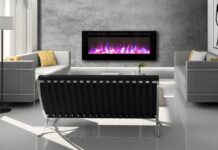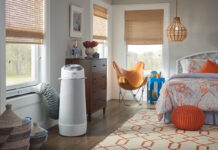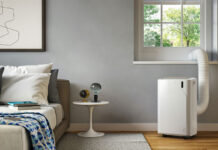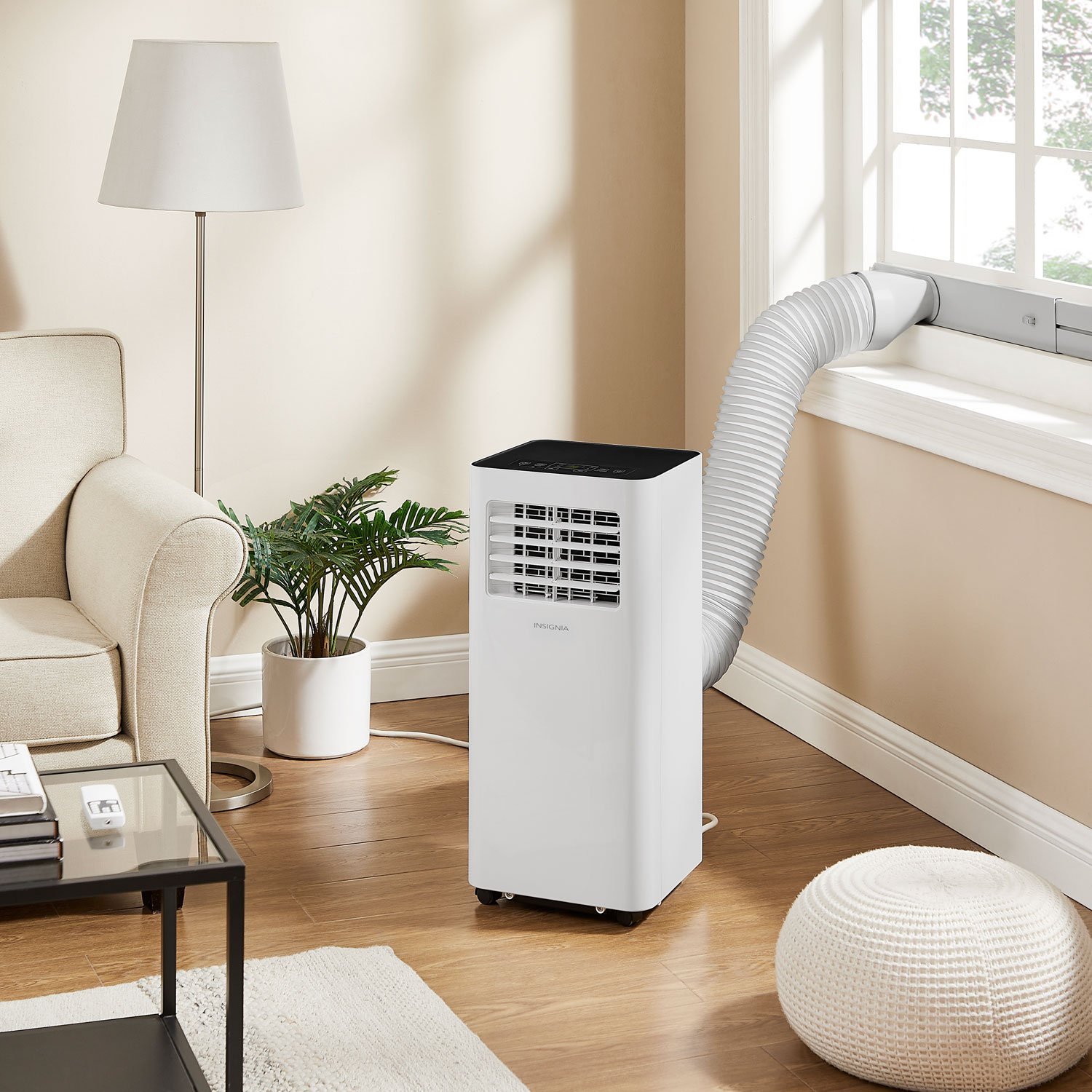
Essential when the weather gets warmer, air conditioners let you control the temperature and humidity in your home to keep you and your family cool during the summer months. There are multiple types of air conditioners with different capacities and features. Which one should you get? This article will go over the options available and what to consider so you can pick the perfect air conditioner for your family.
Table of contents
- What is an air conditioner?
- Types of air conditioners
- Choosing the right size air conditioner
- What are BTUs?
- What to look for
- Installation of an air conditioner
- Do you need dehumidification?
- Accessories
What is an air conditioner?
First, what exactly is an air conditioner? It’s a device that comes in many form factors to help cool the air in the home by taking warm air, removing it, and replacing it with cooler air.
Some homes may be equipped with central air conditioning, which allows you to control the temperature throughout the entire home using the same thermostat you use to control the heat, and an outdoor-installed air conditioning unit. But this is a costly setup, and some homes, as well as apartments, don’t have it. And you might really only need to add cooling to a single room, such as an upstairs bedroom, or one floor of the home. The solution, in these cases, is to buy a portable, window, or mini split air conditioner.
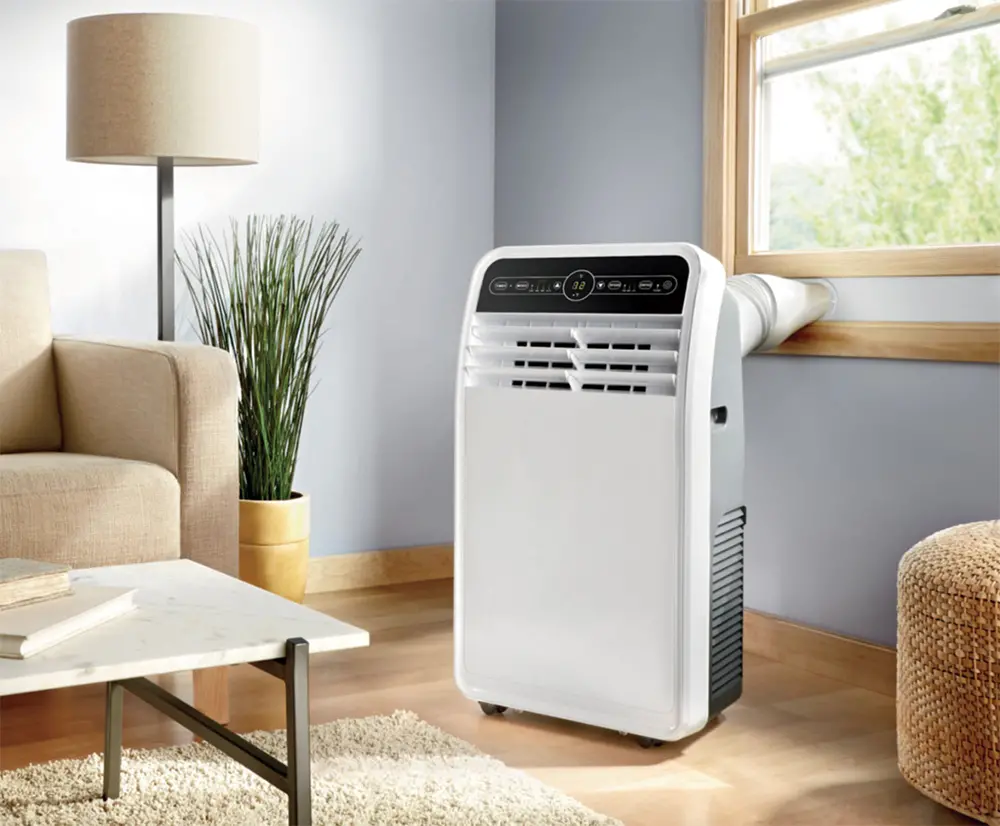
Types of air conditioners
If you’re looking to buy an air conditioner to cool a room in the home, you’ll probably be deciding between three main options: a portable air conditioner, a window air conditioner, and a mini split air conditioner. All three have their pros and cons and are optimal for different situations. To learn more about each type along with for whom each option would be best suited, see this handy comparison.
Portable air conditioners
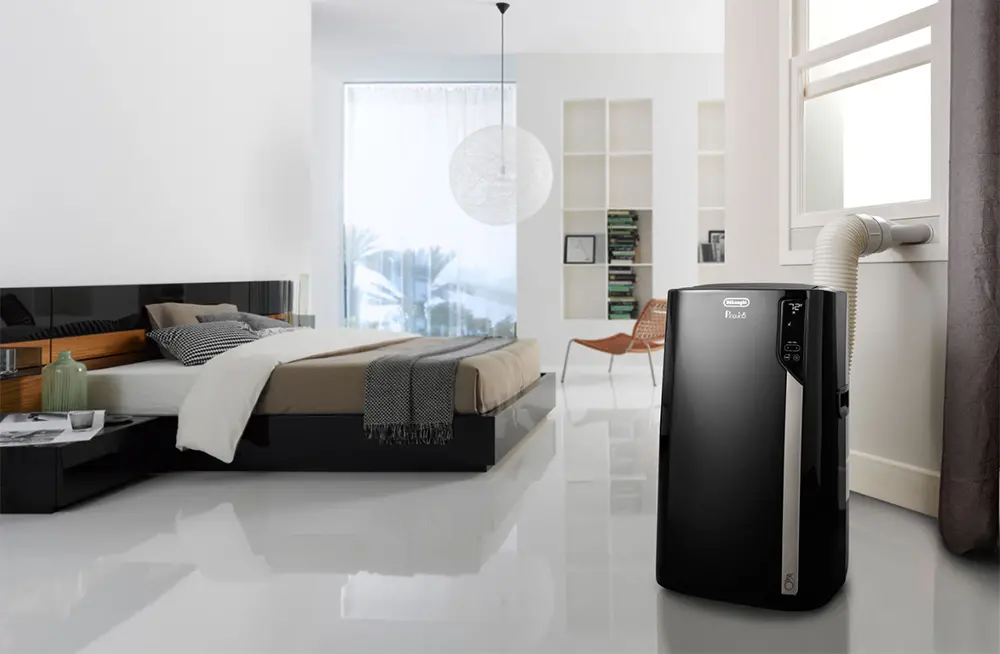
A portable air conditioner is a floor-standing appliance that uses air from within the room to cool the area and exhausts air out from a hose that’s mounted at the window using an included window venting kit. Some models include a self-evaporating function that will recycle condensation back into the air, while others require drainage of water. There are also dual-hose models that include one hose to bring air inside from the outdoors, then run it out through the window, and a second hose that exhausts heated air out. Some can also vent air out through a drop ceiling or through a wall.
A model with a hose will come with a window vent kit that can fit right onto your window opening to expel the air. Those that don’t have a hose require simply that you plug them in and go. But you will need to empty water periodically from a reservoir of some kind. How often will depend on how humid the air is in your room. The most hassle-free option is a more advanced self-evaporating model since they are easy to set up and require very little if any, maintenance.

Advantages of a portable air conditioner
Portable air conditioners are a great option for many, and they have some advantages over other types.
- You can move them from room-to-room
Portable air conditioners are great if you want to be able to move them from room to room (although note that if you have one that exhausts air through the window, you’d also have to remove the hose and install it at another window as well.)
- Can be used in rooms without windows
Unlike other types, they can be used in rooms without windows, such as a basement office or play area. You will need to find a place to vent them from, like a sliding door, exterior door, or drop ceiling. But you will likely require separate accessories for this.
- Stores away easily in the off-season
They are usually quite large and heavy, but often come on castors so you can roll them around, which makes storage during the winter easy as well.
- Easy to set up
They are usually quick and easy to set up in minutes, so ideal if you’re looking for a quick fix to an especially hot home. In many cases, installation might only take you anywhere from 15 to 30 minutes and you’ll be up and running.
- Good for temporary installation
If you live in a rented home or apartment and aren’t permitted to install a window AC, a portable air conditioner is a good solution. All that’s required is the window kit, which is easy to install and remove.

Disadvantages of a portable air conditioner
There are some things you need to take into consideration before opting for a portable AC.
- They take up a lot of space
Since they are larger, you might not want to get one for a small room since it will take up space. They are floorstanding units that need to be positioned close to a window as well, which means depending on the layout of your room, this could impede floor traffic or get in the way of mobility around the room. - They aren’t as effective for cooling larger spaces
Some sources suggest that they aren’t as effective in cooling as a window AC unit for larger spaces, though there’s no definitive evidence on this. It might also depend on the unit and brand you choose. (If you’re worried about efficacy, it’s always a good idea to check out trusted sources for online reviews.) - They can be expensive
Depending on the model and type, portable AC units can be expensive, especially ones with additional features, like humidifiying.
- They can be loud
Portable air conditioners can sometimes run pretty loud, so you might want to get one with a timer function, so you can have it automatically go off at night once the room has effectively cooled, or during your baby’s nap times. Though you never know: some people might find the hum of the unit soothing.
Window air conditioners
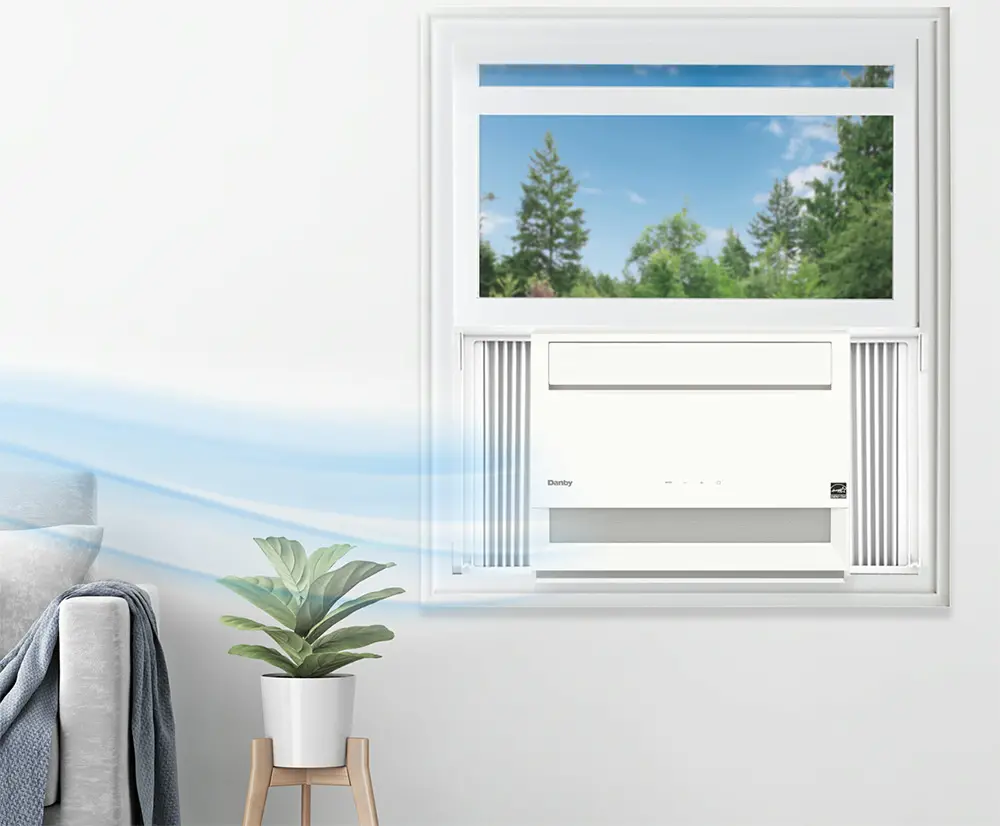
By contrast, a window air conditioner is installed right into a standard-sized window opening, exhausting hot air outside and bringing cool air in. They’re much smaller, and more unobtrusive in design.
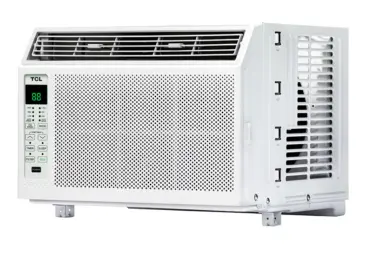
Advantages of a window air conditioner
Window ACs are a preferred option for some, for a variety of reasons.
- They are more discreet
Window air conditioners are more discreet, and don’t take up any additional space in a room since they fasten directly to the window opening, making them ideal for small rooms or apartments. There’s also no drainage to worry about.
- Can be quieter
Window air conditioners can sometimes be quieter than portable air conditioners, running the background while keeping a large space cool.
- They are more affordable
Windows AC units are generally more affordable. If you’re on a tight budget, they might be the more palatable route to go.
Disadvantages of a window air conditioner
Just as with portable AC, there are some potential downsides to consider with window air conditioners.
- Not as easy to remove
Once you install a window air conditioner, it’s not as simple a process to uninstall it as with a portable AC. However, since they are smaller, they can store away easily in a small space. But most people will end up leaving them in the window all year ’round.
- They need to fit the window
While this wont’ be an issue for most, if you live in an older home with unusually small windows in a bedroom where you want to position the window AC, for example, you need to confirm that it will fit. Before opting for one, measure the window opening and compare to the window AC unit to confirm.
- Not for renters
Depending on the rules in your building or rented home, you might not be permitted to install a window AC, leaving a portable AC as your only option. Check with your landlord before purchasing to confirm what you’re allowed to install before considering a window AC for an apartment or rental home.
Mini split air conditioners
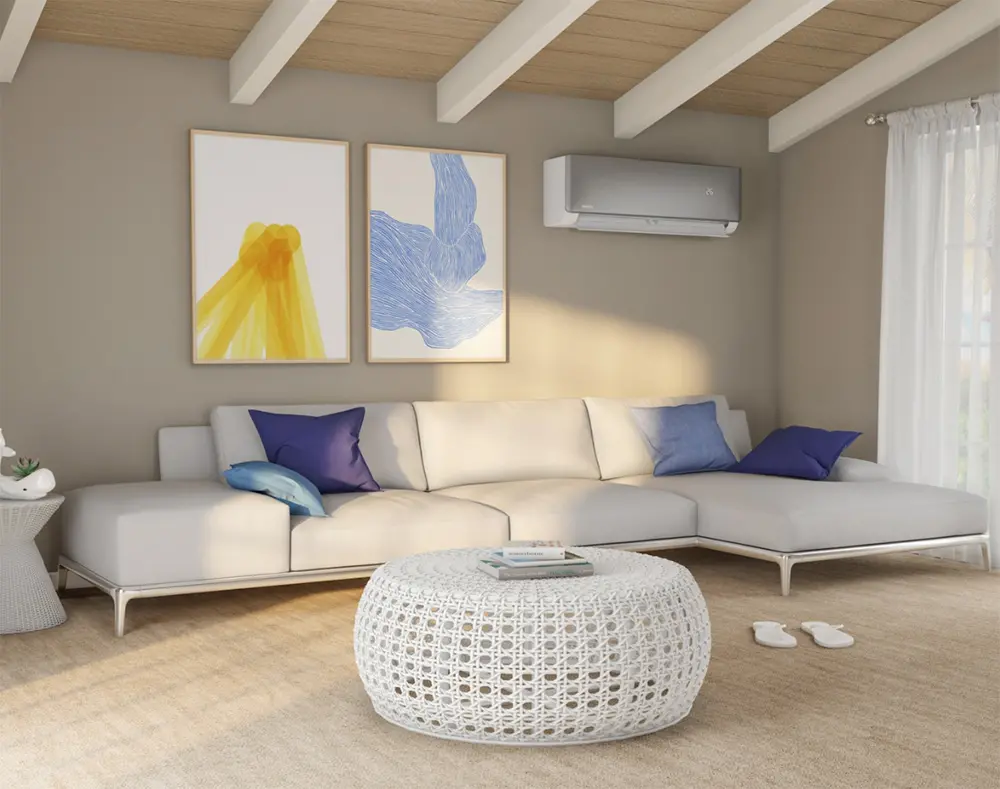
The third main type of air conditioner to consider for your home is a mini split air conditioner, also known as a wall air conditioner. These offer both cooling as well as heating, so you can switch between the two as needed. Especially good for large spaces, they come in two parts. There’s a long, rectangular unit that handles the evaporation of air. It’s usually installed on the wall or by the ceiling. The second piece is an outdoor compressor or condenser that looks like a similar central AC unit, sitting on the ground outside or mounting to a bracket on the side of the house. The two connect to one another via conduit run through the wall.
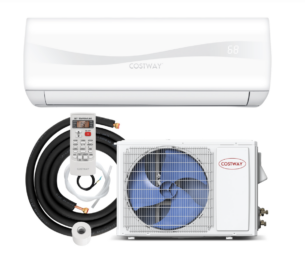
Advantages with a mini split air conditioner
Mini split air conditioners can be the perfect choice for a certain selection of households and homeowners.
- They are efficient
These units can efficiently cool (or heat) a large space, like an open-concept home or an entire floor. You’ll get effective cooling or heating quickly, with even coverage throughout the entire space.
- They run quietly
Despite their large size, mini split air conditioners tend to run quietly in the background. You can comfortably install one everywhere from the living room to the home office, or even the bedroom, and won’t fit it distracting.
- They heat, too
For someone who lives in a city or province that fully experiences all four seasons, and sometimes rapid fluctuations in temperature, they will appreciate the ability to not only cool but also switch to heat on the fly, as needed.
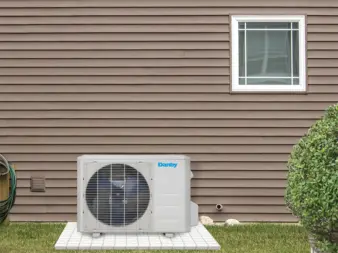
Disadvantages with a mini split air conditioner
Mini split ACs, however, aren’t for everyone. There are some things to consider before deciding to go this route.
- They are more expensive
Mini split ACs can often be the most expensive type of AC of the lot. This is because of their high efficiency, permanency, ability to cool not only larger spaces, but also multiple rooms, and the addition of heat to the equation.
- They require professional installation
Since conduit needs to run through the wall from the inside to the outside unit, it requires the work of a professional. This adds to the bottom line cost and also requires that you set up the appointment and find a trusted installer to do the work. This can also delay how quickly you get it up and running.
- Takes up significant space
Not only does a mini split AC take up significant wall space, which won’t be appreciated in smaller rooms or those with low ceilings, but the outside unit also takes up space in the perimeter of the your property. For larger homes, this may not be a big deal. But if you have a smaller home, you will want to consider this.
- Not easy to move around or uninstall
A mini split AC is the most permanent installation option of the three so you need to consider where you install it carefully. You can seek the assistance of a professional for that as well. This also means it’s likely not an option for renters. You will also need to keep in mind that it will be installed all year ’round. Considering they provide heat as well, however, this might be a welcome realization.
Choosing the right size air conditioner
When deciding on the type of air conditioner you want, it’s also important to consider the physical size of the unit. We discuss how to properly size your air conditioner in this handy guide, but here’s a rundown of some of the most important considerations to make.
- Ceiling height
A room with a higher ceiling means there’s more air volume to circulate, which could impact the type of air conditioner you buy. In this case, you might want to opt for a larger air conditioner, a mini split AC, or even consider opting for a ceiling fan to complement the AC and better circulate the air throughout the entire space.
- Room size
The room size itself will determine first which type of air conditioner you want. For smaller rooms, or if you don’t want to use up a lot of floor space, a window AC is a good option. Because they can cool larger rooms as well, you won’t be losing out by going this route. If it’s a larger room with high ceilings, you can consider a mini split AC. For all sizes of rooms, a portable air conditioner can probably work. But you can look at slimmer models if you’re really pressed for space. Just make sure that the BTUs are sufficient enough to cool the room based on its size. (More on this in the section below.) A good trick you can use is to place painter’s tape on the floor where the unit will go based on its stated dimensions to visualize how it will look.
- Number of people
The more people who will be in the room, the more heat will be generated. If you have a large family, or the air conditioner will be in a room that sees heavy traffic and use, consider a larger air conditioner, whether portable or mini split, with a higher number of BTUs to ensure this compensates for the body heat generated by multiple people and lots of movement.
What are BTUs in an air conditioner?
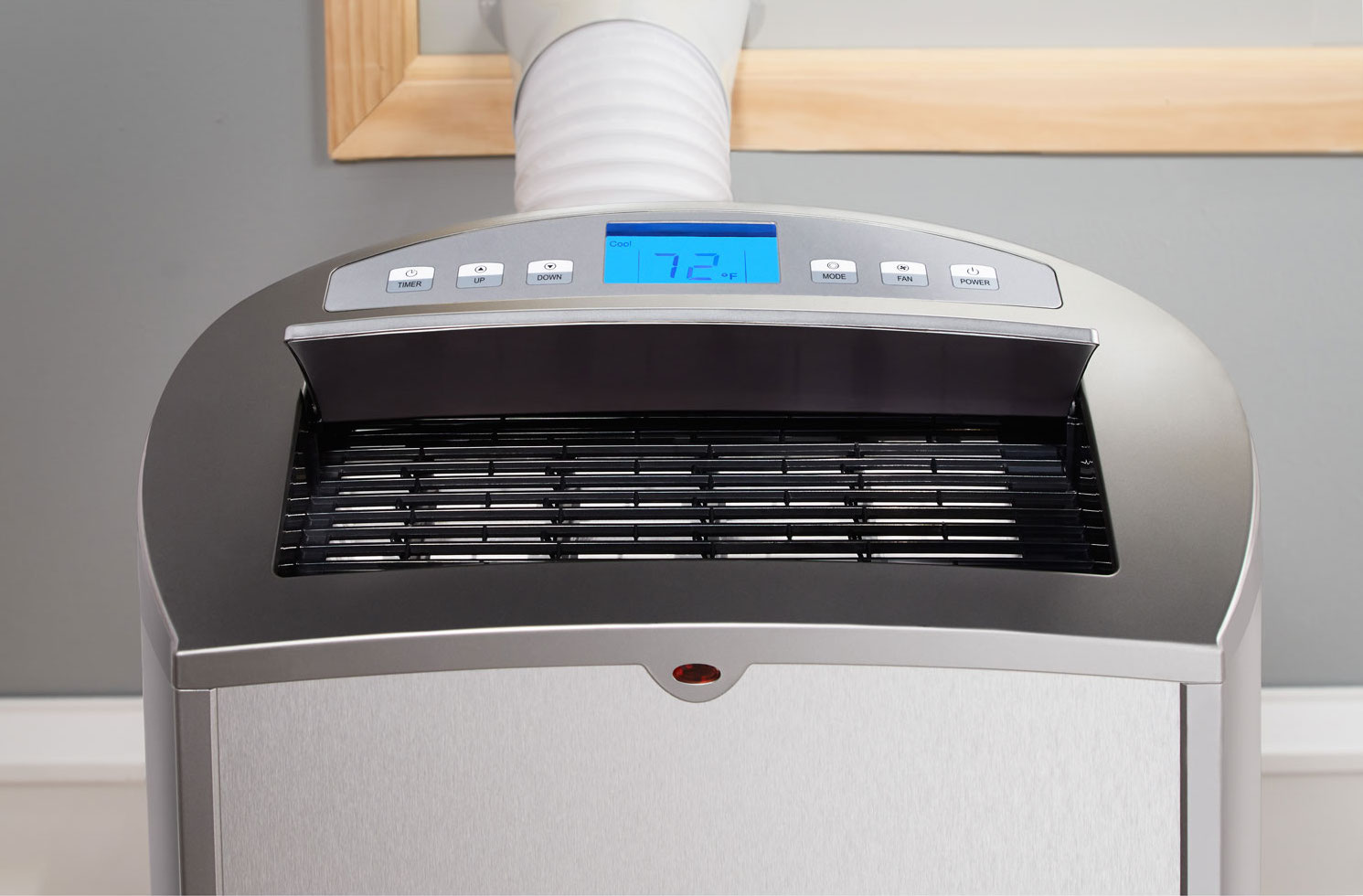
One of the most important things you need to look at when selecting an air conditioner, regardless of the type, is how they work and those important numbers attached to the models.
BTUs
Standing for British Thermal Units, BTUs is the number that measures the amount of heat an air conditioner can remove from the air over a certain period of time, relative to the room’s size. Essentially, the higher the BTUs, the greater capacity the air conditioner has to cool air in a larger room.
So for example, in a 100 square-foot room, a 5,000 BTU air conditioner would suffice to effectively cool it. But getting a 6,000 BTU unit might help further cool down the hallway when his door is left open. Meanwhile, a 14,000 BTU air conditioner can cool a room up to 640 square-feet in size, which is ideal for a main floor living room, or larger basement playroom that tends to get hot in the summer. You can check out the handy chart in this article to determine the appropriate BTU number for your room.
But note that there are new numbers and more accurate measurements to consider beyond just basic BTU.
ASHRAE vs. DOE’s SACC measurements
BTUs can be measured in two different ways: typically by ASHRAE standards (American Society of Heating Refrigerating and Air Conditioning Engineers) and, more recently, DOE’s (Department of Energy’s) Seasonally Adjusted Cooling Capacity (SACC). The ASHRAE figure provides the total number of BTUs that an air conditioner outputs while the revised SACC figure from the DOE accounts for heat generated by the AC unit itself. That, in turn, lowers the total number of BTUs and better represents how cool you’ll actually feel. SACC focuses more on efficiency while ASHRAE reports total cold output.
Thus, an ASHRAE BTU rating for a AC unit might be 10,000 while the SACC figure for the same one is 6,500. A 12,000 BTU air conditioner based on ASHRAE standards is equivalent to 7,500 BTU SACC. Think of it like in the same terms as the rated battery life of a tech device versus the actual battery life. Thus, you might find the SACC figure to be more accurate.
While not all products will include both labels, you can use these stated numbers as a guide. And if the ASHRAE rating alone is stated, just note that the actual rating based on how cool it will make the room will be less. So if you feel you only need a 6,500 BTU AC based on the size of your room, when going by ASHRAE, consider bumping up to one with a 10,000 BTU rating to be certain it works sufficiently and you actually get 6,500 BTUs.
This applies more to portable air conditioners than window ACs since the latter typically pushes warm air outside anyway.
What to look for in an air conditioner
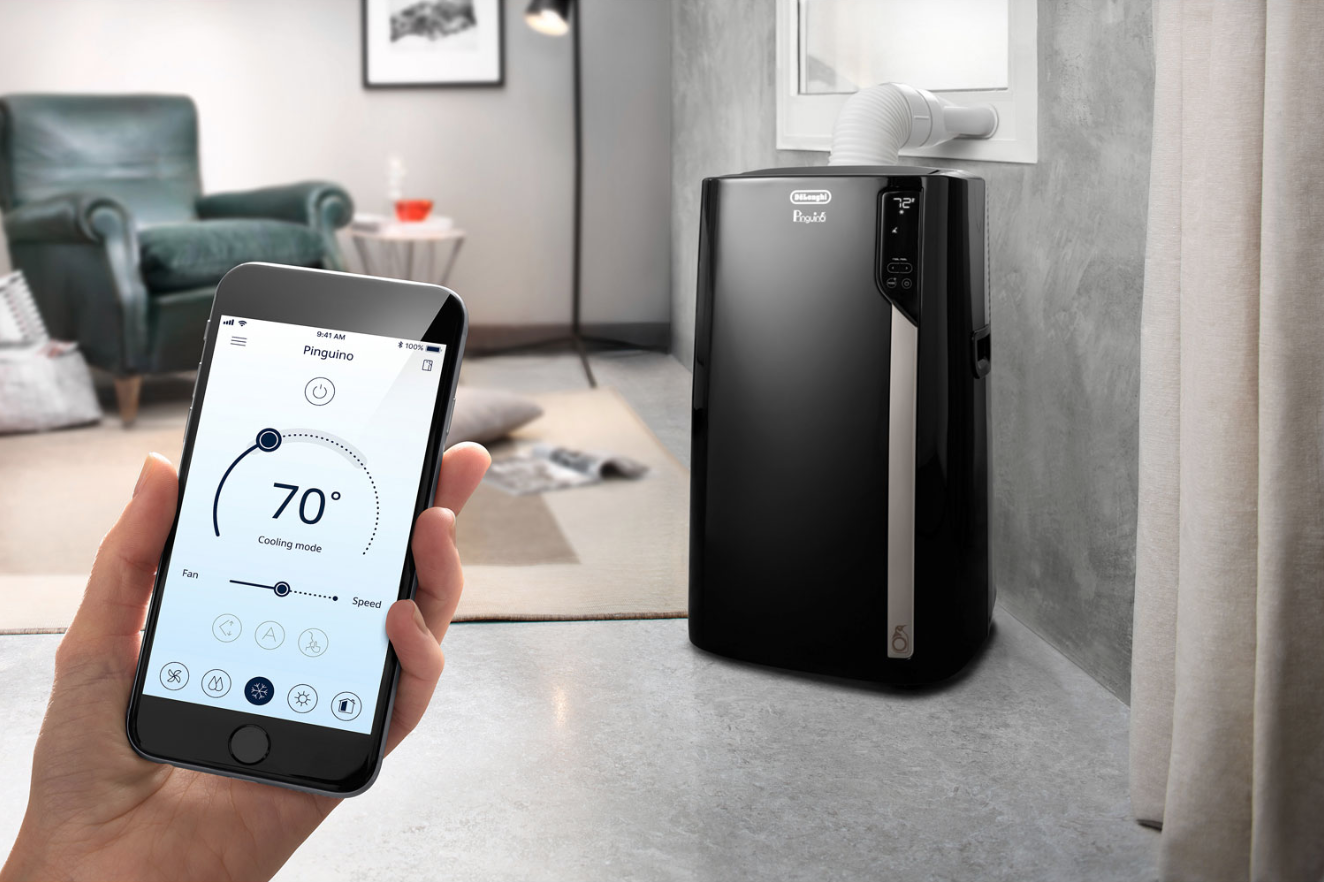
When deciding on which air conditioner is right for you, there are a few things you should consider, and questions you should ask yourself.
BTUs and size of the room
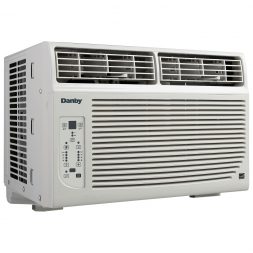
As mentioned above, look at the BTUs relative to the size of your room to make sure it will do the job effectively.
The size of the room might dictate what type you decide on in another way as well: if the room is small, you might want to go for a window air conditioner that won’t take up too much room. If you have the size to accommodate it, or a small area where it can comfortably sit, you might prefer a portable air conditioner that is easy to set up and get going right out of the box, without any installation. If it’s a large, open-concept space with high ceilings, a mini split AC might make the most sense.
Where do you plan on putting the air conditioner?
Are you looking for a solution to cool a specific room in the home, such as your child’s nursery, or the master bedroom? If so, a window air conditioner might make the most sense. But if you think you might want to move it around, and cool different rooms, like the guest room when the grandparents are staying over, look at a portable air conditioner instead.
Noise level
You also need to consider things like noise: how loud is it, and will it distract your baby, or a light sleeper? If so, look for one that touts extra-quiet operation. And also make sure a window AC or a portable air conditioner’s exhaust hose set-up will fit properly in your window, especially if your windows are unusually small or large.
Storage considerations
Also consider what you plan to do with it at the end of the season: while both portable and window air conditioners can be removed at the end of the season for storage, it’s much easier to roll a portable air conditioner into the basement or closet to store it away. But it will, of course, take up much more room. You don’t need to worry about storage with a mini split AC, but it also provides heat during the cooler and frigid months. So there’s an added benefit in not having to store it away while also keeping it running through the year.
How much space do you want to cool?
If you’re looking to cool an entire house, you could opt for multiple window air conditioners for each main room, or get a portable air conditioner to place on each floor of the home that you can move around, or tilt in the desired direction to cool down the space you’re currently in. But you may just be looking to cool down one or two rooms of the home, like the bedrooms, or a small apartment, in which case, a single unit should be enough. If you’re renting an apartment, while a portable air conditioner is larger, it might make more sense since it does not require any type of installation, and you can roll it around if it’s on castors for cooling wherever it’s needed. For a larger space, a mini split AC might just be worth the investment.
Cost
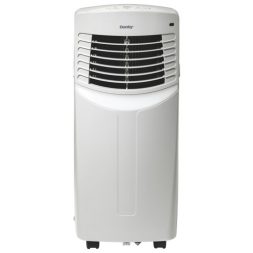
The upfront cost of the unit is a important consideration: window ACs are usually less expensive, whereas portable and mini split air conditioners with high BTUs can be costly, but effective for larger rooms, or cooling entire open concept floors of a home.
Environmental friendliness
Whichever option you choose, look for an Energy Star or other environmental-type rating to ensure not only that it runs efficiently, but that it won’t use too much electricity, and cause a massive jump in your bills.
Ease of installation and maintenance
If you don’t want to have to be constantly draining out the water, look for a model with a function that will evaporate the water and recycle it back into the air, so it’s easy and maintenance-free.
Portable AC units are easy to set up, since you simply plug them in, position the hose to vent out of the window if you get such a model, and you’re good to go. They usually also have easy-to-clean filters. If you want a quick and easy set-up that you can move from room-to-room, consider a unit that collects the water from condensation in a bucket that you need to empty as needed, or a self-evaporating model.
While a mini split AC requires a more intense installation process from the get-go, it requires little to no maintenance after that, making it the easiest to maintain.
Convenience and smart features
You might appreciate having certain convenience features, like a handy remote to adjust the temperature of a portable air conditioner in the living room from the comfort of your couch, or a timer function so you can set it to cool your child’s room overnight, then shut off at 7 a.m. each morning once he’s up for school. Some also have multiple settings to adjust the cool level, which is perfect to toggle as the temperature outside fluctuates.
Many air conditioners nowadays also have smart features, like built-in Wi-Fi, app control, scheduling, voice control, and even the ability to include them in smart home “scenes” so you can turn the lights and AC on along with the music every morning at 8 a.m. automatically, have them shut off at 9 once you head to work, and come back on at 4 so the house is sufficiently cooled by the time you arrive back home for 5.
Also keep in mind that there are some all-in-one portable units that have secondary features as well, like heating and even dehumidifying.
Installation of an air conditioner
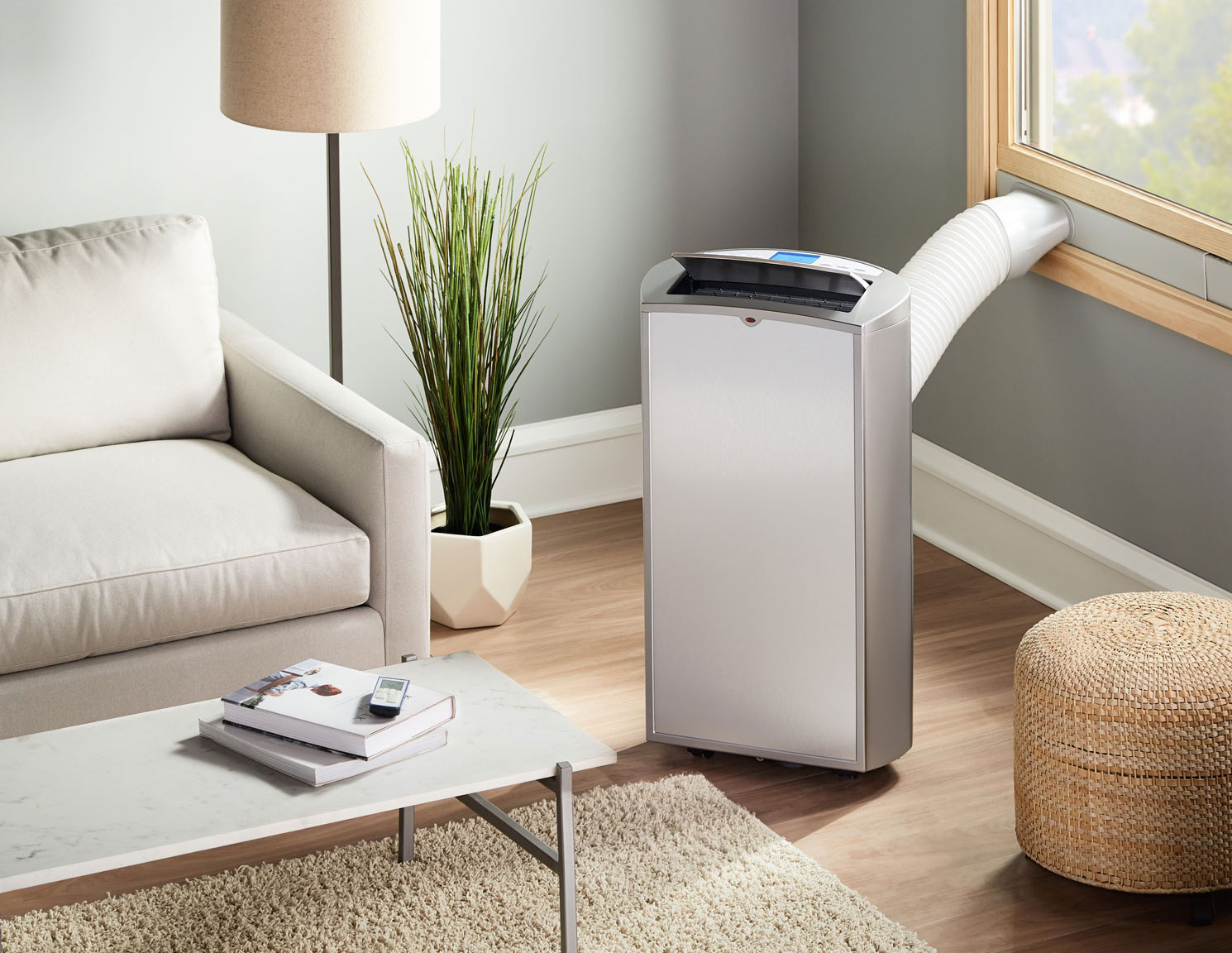
Installation of an air conditioner differs depending on the type of model you get. We cover how to install an air conditioner in this handy guide, but here’s a breakdown.
How to install a window air conditioner
To install a window air conditioner, find a power outlet closest to the window and make sure to power cord reaches. You should avoid plugging it into a power bar. Use a screwdriver or drill to install using the included screws and brackets. You will also find measuring tape handy. Follow the instructions in the booklet. DOn’t forget to install weather stripping to protect the window and prevent air from getting through the sides.
How to install a portable air conditioner
The easiest to install, there are no tools required, though depending on the unit, you might need a simple screwdriver and drill. Find a hard, level surface close enough to the wall and window so the hose can comfortably be vented outside. First, install the window kit; you may need to add filler like plywood or plexiglass if the kit is smaller than the window or conversely, cut it with a utility knife if it’s larger. Attach the hose, plug it in, and enjoy.
How to install a mini split air conditioner
The most complex of installation processes, a mini split AC requires running conduit through the wall so you should seek the assistance of a professional to get this done. Any HVAC specialist should be able to install this unit and can also provide placement advice.
Should you get an AC with dehumidification for your home?

Some air conditioners have built-in dehumidifying functions as well. This can be advantageous for a number of reasons.
They remove humidity and moisture from the air
This helps to maintain a comfortable temperature and making the air less dry. This can also help prevent things like musty odours, peeling paint, dust mites, and mold. If you live somewhere that gets pretty humid during the summer months, this is a function worth considering to help both cool the air and get rid of excess moisture. Air conditioners circulate cool air throughout the home, but often times, it won’t reach the basement level as well as the other levels of the home. If you live in a three-story home, a dehumidifying function can come in handy.
Perfect for apartment dwellers
Apartment dwellers might find the dehumidifying function of a hybrid portable AC useful if building management doesn’t turn on the AC until later in the year and Mother Nature has brought humidity earlier than expected. Or conversely, if humidity lasts longer than the typical shut-off date for AC in the apartment. With the unpredictable weather patterns in Canada, you never know when you might need it!
Consider a separate dehumidifier
You might also want to consider a separate dehumidifier if it’s only one room or floor of the home that tends to get hot, humid, and muggy, even with air conditioning running. If you’re using a portable AC, the dehumidifier will help reduce moisture in the room it’s in but it won’t travel to other rooms of the home, like the basement. If the AC unit is not in the basement, it would be a good idea to grab a dehumidifier for that floor, too, or a portable AC with a dehumidifying function for the basement.

Will you need accessories for an air conditioner?
You shouldn’t need any accessories for an air conditioner, but there are some items you can get, like side panel kit that can replace worn side panels and help reduce drafts; and a cover for a window air conditioner that can protect it from damage in the winter if you do leave it installed all year, and to help reduce drafts and heat loss. There’s also the mounting bracket, as mentioned, for the outdoor unit of a mini split AC that you can consider for a neater installation, especially if you only have grass at the side of the house and want to keep that clear.
Final thoughts
There are so many things to consider when deciding on an air conditioner. Portable air conditioners are versatile, and usually come with a lot of options, like a timer, multiple settings, and a remote, which make them attractive options, even if they tend to be more expensive. Window ACs might appeal to the budget-conscious person just looking to cool a single room with an unobtrusive design, low maintenance, and little noise. For larger spaces, permanent installation, and heating as well, a mini split AC is about as fitting as you can get.
Take the next step
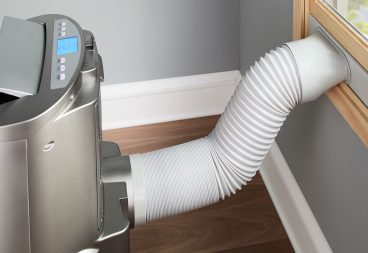
Check out plenty of air conditioner options, including window, portable, and mini split air conditioners, at bestbuy.ca.





